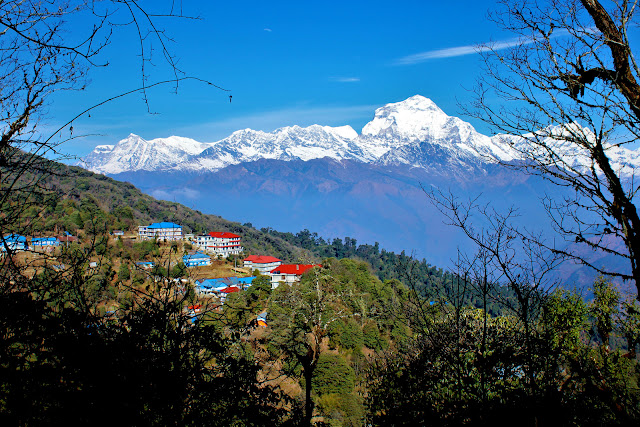An annual event celebrated globally on 22 nd March is the World Water Day focused on the
importance of water. The day is remarkable in dragging attention on the importance of Universal
access to the clean water, sanitation and hygiene facilities. The theme for the World Water Day
018 is “Nature for Water”- exploring nature-based solutions to the water challenges of the 21 st
century. The theme for this year explores nature –based solutions to the existing water related
problems we are facing at the time. These Solutions could overcome the challenges and reduce
the hazards like floods, droughts, water pollution and others ultimately protecting eco-system
and enhancing the water availability and sustainability with special attention on carrying capacity
of the Earth. These solutions could be anything to rebalance the water cycle and improve the
livings on the planet with set of examples like restoring wetlands, green roofs and infrastructures,
afforestation, nexus between rivers and floodplains etc. This clearly indicates, nature is so
immensely perfect and well-functioning that “Answer is in nature”.
A transparent, tasteless, odorless and nearly colorless chemical substance i.e. H 2 O, water is the
main constituent of the Earth’s water bodies and fluids of the most living organisms. Today
many scientists are propagating the doctrine that life originates from matter, of course water, the
most significant universal solvent essence for every living beings and natural phenomena; natural
cycles.
Although knowing the unaccountable significances and life support functionality of water, we
are just 25 years old on remarking this significant day. The first World Water Day, designated by
United Nations was commemorated in 1993.With then 25 years of World Water Days, various
organizations, committees and people worldwide, including all UN member states observe this
day highlighting the importance of freshwater. The focus on universal access to clean water,
sanitation and hygiene (WASH) is in line with the targets of Sustainable Development Goal-6.
With higher prior to mark this important World Water Day, the Small Earth Nepal (SEN) adds a
brick on wall of sustainability and water concern. A week-long marking of the events is well set
under Tenth Nepal National Water & Weather Week (NNWWW-018). It’s a national level
nationwide event providing a common platform to all the nature enthusiasts, expert panel,
scientists and learner to collaborate for a vibrant in the concern matter of water and
sustainability.
The opening ceremony of the 10 th NNWWW-018 was successfully held in the Department of
Irrigation, Jawalakhel, inaugurated by the chief guest, Honorable Minister, Mr. Lal Babu Pandit,
Ministry of Federal Affairs & General Administration. He shed light upon the theme Nature For
Water and Weather Ready, Climate Smart in the context of Nepal. With the grand opening
ceremony, a successive event, Walk for Water was held at Patan Durbar Square. It was an
initiative taken by Water Aid Nepal to trigger the water related problems in the rural zone of
Nepal. Over 50 participants from the public showed interest in main motive of the event,
highlighting difficulties in water fetching from the sources. It had been a wonderful sight at
Durbar Square where the event was so mesmerizingly dragging everyone’s attention over.
Walk for a change-walk for water, is another highlighting event of the grand week. Walking
along the magical whispers of cold trees and observing the sources of water, the environmental
enthusiasts and avid hikers attended a day hike to Dhaap- a wetland in Chisapani, Shivapuri
Nagarjung National Park. Upon arrival at destination, a brief discussion was carried out in
relevance to the theme “Nature for Water” facilitated by Mr. Kabiraj Khatiwada and Mr.Nammy
Hang Kirat.
Opposed to J.R.R Tolkien, “Not all those who wander are lost”, we were so enigmatically lost in
the forest wilderness. This simultaneously turns out to be the most adventurous part of entire
hike, despite fact of pitty situation of wetland; one could easily notice in contrast to the earlier
scenario. Located in the headwater of Nagmati River near Chisapani at an altitude of 2,089 m
above main sea level, Dhaap once used to be a fascination sight with huge water volume and
various floral species. But then, the wetland now is all left with shallow level of muddy water
and less floral species. A grand project of dam construction in the area is letting this all
happening with the clearance of large mass of trees and rapid constructions of dam with excesive
minerals and soil extractions. The image possibly to the best of serene beauty now, most
probably would have been faded away in comparison to one few years back. We could do
nothing in the alarming symphony of destruction, besides hoping for the best once the project is
done. We hope very optimistically that the wetland would be restored back with intense volume
of water and aquatic species within along the various floral species in the area after the
construction is accomplished. Hereby, we would like to drag everyone’s attention over with
regards to the water conservation and sustainability.
One planet,
Hundreds of nations,
And billions of people within.
Together let’s make a change.
Stand for sustainability.
Stand for the best use of resources.
Explore nature-based solutions to water.
Nature for Water.
- Kshitiz Kandel (kexploreland)


